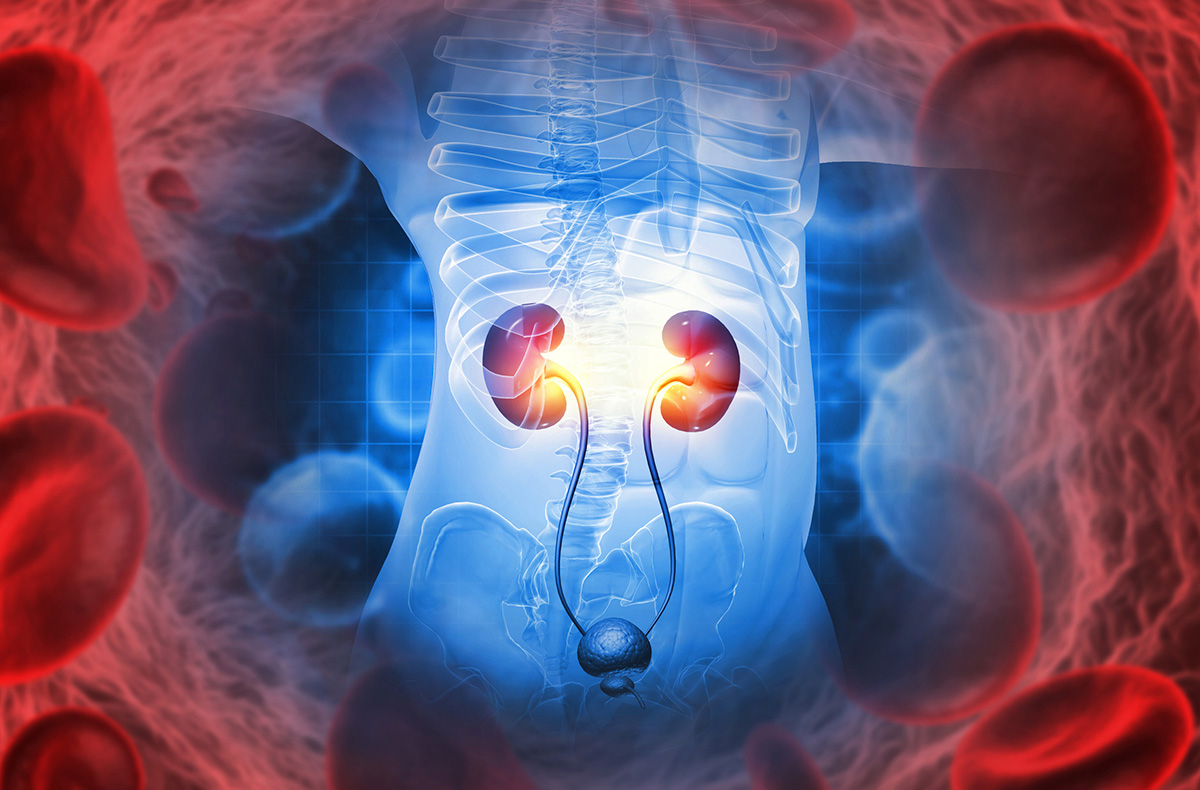Once urine is produced in the kidneys and collected by the calyces and renal pelvis, it flows down the ureters into the bladder. The ureters are very thin tubes, about 5 mm in diameter, which have peristaltic movements (like those of the intestine) that allow the urine to move more easily. Once it reaches the bladder, urine is stored in the bladder until it is expelled during urination.
The functioning of the bladder is very complex, as it depends on three different types of nerves, namely the hypogastric nerve belonging to the sympathetic nervous system, the pelvic nerve belonging to the parasympathetic and the pudendal nerve belonging to the voluntary or somatic nervous system. The sympathetic and parasympathetic nervous systems belong to the autonomic nervous system, which, as the name suggests, is a nervous system that is not under the voluntary control of the brain. It is not the aim of this article to explain the complex micturition reflex in detail, I will only point out that all these nerves start from neuron nuclei in the spinal cord (T11-L2 for the hypogastric nerve, S2-S4 for the pelvic nerve and for the pudendal nerve), which in turn are regulated by higher brain structures. So one can imagine that when there are problems in the spinal column (a herniated disc for example) or there is a neurological disease (such as Parkinson's disease, Alzheimer's disease, multiple sclerosis or stroke, among many others) the micturition reflex can be affected. Under normal conditions, the coordinated work of these three nervous systems is essential for both micturition and continence to occur properly. Thus, during urination, the detrusor muscle of the bladder must contract thanks to the nerve impulse it receives from parasympathetic fibres, while the bladder neck (or internal sphincter) and the external sphincter relax, the former governed by sympathetic fibres and the latter by somatic fibres of the pudendal nerve. If this coordination does not occur properly, dyssynergic micturition or uncoordinated micturition will occur, with contractions of one or both sphincters during voiding, incomplete bladder emptying, or both. Outside of micturition, the detrusor muscle is at rest because there is a high sympathetic tone and low parasympathetic tone which allows its fibres to relax and give capacity to the bladder. At the same time, the bladder neck is contracted thanks to sympathetic tone and the external sphincter is contracted thanks to the action of the pudendal nerve. This situation allows us to be continent and not lose urine while the bladder is filling.
Having seen this, we can understand that any obstruction to the outflow of urine, whether of anatomical origin (hypertrophy of the prostate, cicatricial or congenital stenosis of the urethra) or of functional origin by which the sphincters do not relax properly during urination (uncoordinated urination, dyssynergia of neurological cause), can promote urine infections, dyssynergia of neurological cause), can promote urine infections, as can any disease that causes a weakness of the bladder muscle that does not allow the bladder to expel urine correctly, even if there is no obstruction.
Arponen S (2021). Es la microbiota, idiota. Alienta.
Godaly G, Ambite I, Svanborg C. Innate immunity and genetic determinants of urinary tract infection susceptibility. Curr Opin Infect Dis. 2015 Feb;28(1):88-96.
Lacerda Mariano L, Ingersoll MA. Bladder resident macrophages: Mucosal sentinels. Cell Immunol. 2018 Aug;330:136-141.
Song J, Abraham SN. TLR-mediated immune responses in the urinary tract. Curr Opin Microbiol. 2008 Feb;11(1):66-73.
Becknell B, Ching C, Spencer JD. The Responses of the Ribonuclease A Superfamily to Urinary Tract Infection. Front Immunol. 2019 Nov 29;10:2786.
Steigedal M, Marstad A, Haug M, Damås JK, Strong RK, et al. Lipocalin 2 imparts selective pressure on bacterial growth in the bladder and is elevated in women with urinary tract infection. J Immunol. 2014 Dec 15;193(12):6081-9.
Ueda N, Kondo M, Takezawa K, Kiuchi H, Sekii Y, et al. Bladder urothelium converts bacterial lipopolysaccharide information into neural signaling via an ATP-mediated pathway to enhance the micturition reflex for rapid defense. Sci Rep. 2020 Dec 3;10(1):21167.
Hayes BW, Abraham SN. Innate Immune Responses to Bladder Infection. Microbiol Spectr. 2016 Dec;4(6):10.1128/microbiolspec.UTI-0024-2016.
O’Brien VP, Hannan TJ, Schaeffer AJ, Hultgren SJ. Are you experienced? Understanding bladder innate immunity in the context of recurrent urinary tract infection. Curr Opin Infect Dis. 2015 Feb;28(1):97-105.
Huang J, Fu L, Huang J, Zhao J, Zhang X, et al. Group 3 Innate Lymphoid Cells Protect the Host from the Uropathogenic Escherichia coli Infection in the Bladder. Adv Sci (Weinh). 2022 Feb;9(6):e2103303.
Wu J, Abraham SN. The Roles of T cells in Bladder Pathologies. Trends Immunol. 2021 Mar;42(3):248-260.
Billips BK, Schaeffer AJ, Klumpp DJ. Molecular basis of uropathogenic Escherichia coli evasion of the innate immune response in the bladder. Infect Immun. 2008 Sep;76(9):3891-900.
Nielsen KL, Stegger M, Kiil K, Godfrey PA, Feldgarden M, Lilje B, Andersen PS, Frimodt-Møller N. Whole-genome comparison of urinary pathogenic Escherichia coli and faecal isolates of UTI patients and healthy controls. Int J Med Microbiol. 2017 Dec;307(8):497-507.
Ambite I, Butler D, Wan MLY, Rosenblad T, Tran TH, Chao SM, Svanborg C. Molecular determinants of disease severity in urinary tract infection. Nat Rev Urol. 2021 Aug;18(8):468-486.
Ziegler T, Jacobsohn N, Fünfstück R. Correlation between blood group phenotype and virulence properties of Escherichia coli in patients with chronic urinary tract infection. Int J Antimicrob Agents. 2004 Sep;24 Suppl 1:S70-5.
Sulaiman KA, Al Qahtani N, Al Muqrin M, Al Dossari M, Al Wabel A, et al. The correlation between non-O blood group type and recurrent catheter-associated urinary tract infections in critically ill patients: A retrospective study. J Int Med Res. 2022 Jul;50(7):3000605221108082.
Albracht CD, Hreha TN, Hunstad DA. Sex effects in pyelonephritis. Pediatr Nephrol. 2021 Mar;36(3):507-515.
Wnorowska U, Piktel E, Deptuła P, Wollny T, Król G, et al. Ceragenin CSA-13 displays high antibacterial efficiency in a mouse model of urinary tract infection. Sci Rep. 2022 Nov 10;12(1):19164.

